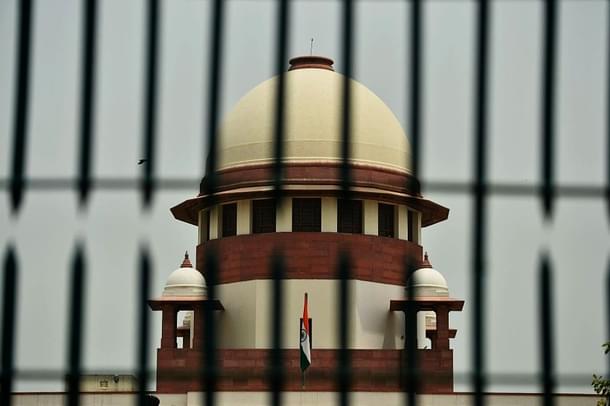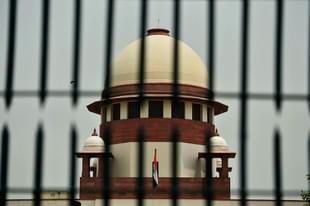Politics
SC Order Shows How Minority Institutions Use Article 30 To Harvest Souls; It’s Time Modi Govt Amended It
Arihant Pawariya
Oct 01, 2019, 12:04 PM | Updated 12:04 PM IST
Save & read from anywhere!
Bookmark stories for easy access on any device or the Swarajya app.


You can also read this in Hindi- सर्वोच्च न्यायालय का निर्णय दर्शाता है कि कैसे अनुच्छेद 30 का दुरुपयोग हो रहा है
In 2005 and 2006, Andhra Pradesh government led by Chief Minister Y.S. Rajasekhara Reddy issued a few government orders to reform the admission process in Central Entrance Test (CET) for B.Ed courses in universities and colleges of the state. These dealt with straightening out the regulations involving both aided as well as unaided minority educational institutions.
It might have surprised Reddy, who was infamous for his missionary zeal, when some minority education institutions challenged these changes in the court — changes which were put in place to benefit these very institutions. Here is a short summary of what those government orders entailed:
1. In 2004, the state government allowed minority colleges to fill 85 per cent of the seats with students from the minority community. In the 2005 order, it mandated that the minority candidates seeking admission under this 85 per cent quota will have to furnish their Secondary School or Transfer Certificate as proof of their religion (minority status).
2. The government mandated centralised counselling for admission into minority colleges also.
3. In case there are not sufficient number of concerned minority candidates to fill 85 per cent of the seats in unaided colleges, then the vacant seats can be filled with non-minority candidates who qualified in the CET. This shall be done by the Convenor, in charge of counselling process of CET admissions, in the presence of a government nominee.
Minority institutions filed writ petitions against the government orders which stipulated these rules and approached the Andhra Pradesh High Court where a single judge bench dismissed these concerns and ruled in favour of the state government.
On appeal, the matter was heard by a two-judge bench of Justices G Singhvi and G Seethapathy which also ruled against the institutions. The matter reached the Supreme Court where Justice Indu Malhotra and Sanjiv Khanna passed their ruling [PDF] on 25 September upholding the constitutionality of government orders.
First, minority institutions had argued that the insisting on Class 12 certificate as proof of minority status of candidates violated Article 25 of the Constitution which gives one the right to practice, profess and propagate one’s religion.
The government reasoned that this rule was introduced because candidates belonging to other communities were getting Baptism Certificates from local Churches (i.e. ‘many students were converting overnight’) and misusing them to get admission in the 85 per cent minority quota.
Second, the minority institutions submitted that the rule giving power to the Convenor of CET to allot seats to non-minority students in case there were not sufficient minority students was an intrusion on the right to administer their institutions conferred by Article 30(1) of the Constitution of India.
The first argument regarding Article 25 by the institutions was bogus to say the least. As data shows, overwhelming majority of the students taking admissions under minority quota were using conversion certificates from Churches.
This was tantamount to converting people through force/coercion or by luring which is in fact exactly opposite of freedom of religion enshrined in the constitution.
The fierce stance taken by minority institutions to protect its right to admitting even students from other communities proves that they are more interested in harvesting souls rather than in running institutions to serve their community which was the idea behind giving special protection to them under Article 30.
While the then Andhra Pradesh government may have brought this rule to make sure that only bona fide students from minority communities benefit, the institutions wanted to earn more converts.
But both the high court and the apex court have done the right thing by siding with the former as it is the least bad option.
As the Supreme Court noted:
....67 out of 200 students in New College of Education, Nizamabad; 90 out of 136 in Rayalseema College of Education, Kurnool; 82 out of 102 in Bhongir College of Education, Bhongir; 60 out of 85 in Jyoti College of Education, Siricilla; 91 out of 102 in Anebesent College of Education, Khammam; 85 out of 102 in Trinity College of Education, were admitted on the basis of Baptism Certificates. In most of these cases, the candidates declared themselves to be Christians subsequent to the date of submitting their applications for the Entrance Test.
Further, it stated that the government order ‘safeguards the interest of genuine minority students, so that their seats are not taken away by those who resort to false conversions overnight, for the purpose of securing admission. This would preserve the minority character of the institution, rather than act as an intrusion of the same.’
The second argument of the institutions was that by giving CET Convenor the power of selecting non-minority students in case there aren’t enough minority candidates available infringed on their right to administration.
But the Supreme Court noted that ‘the number of colleges, and the seats available for minorities, were highly disproportionate, and far in excess of the population as per the 2001 census’.
Therefore, seats remaining unfilled in the minority institutions every year, would not be in the interest of the minority educational institutions and the Convenor was merely there to ensure the process is fair and transparent.
While in the first case, the court pronounced its verdict keeping in mind that only genuine minority students benefit, in the second one, the concern was how to best serve the interest of minority institutions.
What’s the implication of this? Does it mean that the State can introduce regulations for minority institutions if it is doing so in the interest of the minority students or institutions? In the absence of any clear tests, there is a lot of room for debate.
When the Karnataka government mandated that minority institutions need to have at least 75 per cent students from the minority community, which a particular institution was set up to serve, the state High Court stayed the order.
In April last year, Tamil Nadu government issued an order asking the minority institutions in the state to reserve at least 50 per cent of the seats for minority students. But it was struck down by Madras high court when approached by a Christian minority institution.
The court stated that ‘there cannot be a common rule throughout the state to admit a minimum of 50 per cent minority students in the state, as the condition precedent for minority status, while the Christian population was only 6.1 per cent in the demography of the state.’
Basically, the government can stipulate as high a limit as 85 per cent in Andhra (but no lower limit) and this is flexible — you can induct non-minority students too if you can’t find enough minority students.
Essentially, from 0 per cent to 85 per cent, they can fill the seats as per their convenience. However, when the government tries to put a minimum quota for minority students in minority institutions (75 per cent in Karnataka; 50 per cent in Tamil Nadu), this is not allowed.
Bottomline is this: the government can bring in regulations for minority institutions but they will be upheld by the judiciary if they are clearly for the benefits of minority students and not even remotely seen imposing harsh conditions of the right of the institutions to establish and administer themselves. For the minorities and of the minorities.
So, it is futile for those non-minority institutions to expect any semblance of justice from the judiciary in creating parity with their competitors from the minority communities.
The courts have moved too far in their interpretations of Article 30 that the original intention with which it was put in the Constitution is mangled beyond recognition.
That leaves no choice but for the central government to step in and amend this article of the Constitution which is highly discriminatory, distorts markets in favour of a few sections of society and is thus blatantly communal. There is no (better) alternative.
Arihant Pawariya is Senior Editor, Swarajya.





